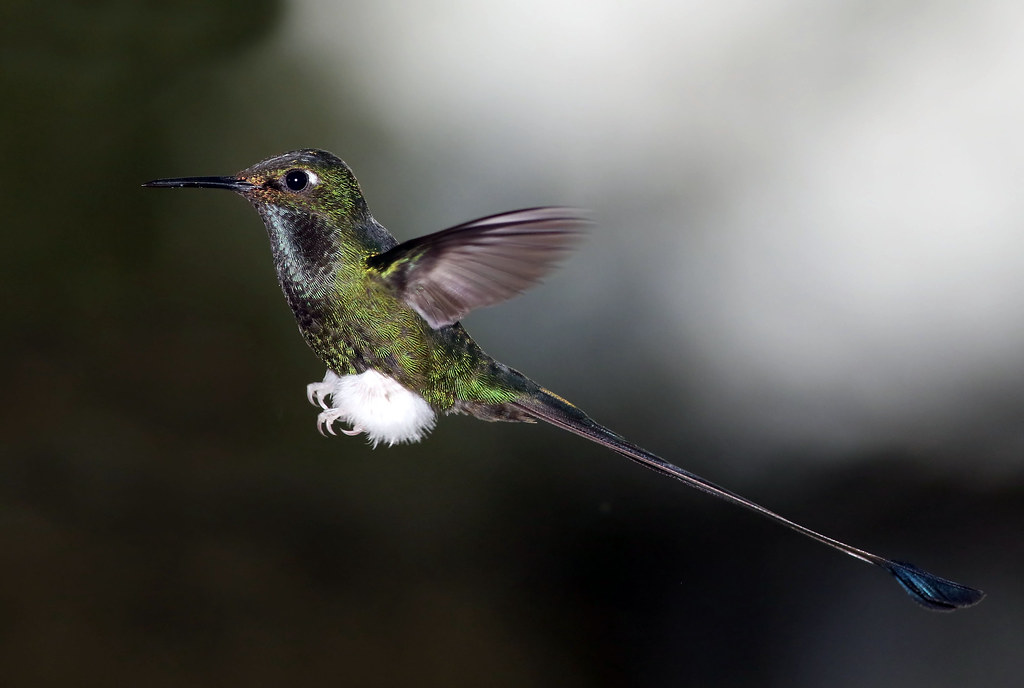Jim. The flash sync speed of the Canon 50D is 1/250’th second.
You should be keeping your shutter speed at or below that (example 1/250, 1/125, 1/60), in order for the flash to properly expose the frame. You see when using a flash for such photography, it isn’t the camera‘s shutterspeed that stops the motion - it is the short flash duration.
If the flash is set to a reduced power output, it can provide very short bursts that help freeze the action (not the same as high speed sync). To do this you generally dial in settings of maybe 1/8th or 1/16’th power on your flash. Because of the reduced light output, it often benefits from having multiple flashes set the same low power/short duration (all firing at the identical time). This generally requires getting the flashes as close to the subject as is reasonable.
It is easy to say use flash - and is probably best to use flash for hummingbirds - but there is also a learning curve. To use proper camera sync shutter speed with flash, requires that the ambient light does not negate the effect of the short flash duration. The principle for determining exposure when using flash, is that the Aperture controls flash exposure and Shutter Speed controls the ambient exposure. No hard and fast rules as to the balance of flash and ambient light used - but for me there is nothing appealing about seeing pictures of hummingbirds/birds/animals where the use of flash is obvious - sheen on the feathers along with bright spotlight in the eye.
Yes there are high sync ( FP ) modes for the flash, but that have limited use depending on the photographers abilities. It may work for adding a tiny bit of flash into the scene. What that flash mode does is provide a stream of low output flashes one after the other in quick succession to make up the desired exposure value.
—————
If you decide that you aren’t going to use flash for your hummingbird pics, you will need the highest shutter speed your camera offers - hopefully 1/4,000th or 1/8,000th - if you are wanting to minimize wing blur. The challenge here is that you need very good lighting to achieve those shutter speeds. If natural light is your decision, you will likely have to be content with using higher ISO settings than you would like. Get your exposure proper, and the resulting noise become less of an issue.
————
Personally, I don’t mind some motion in the wings. Iris very natural looking to me.
Good to remind yourself that a big part of learning photography is experimenting and failing and trying again. So don’t get discouraged and don’t presume your issues are the camera. They generally never are. Don’t try to fix things in Photoshop. Get the images right in camera by controlling the scene.
Make good use of Google Search and nowadays there are many YouTube videos where you can see the instruction in action. Watch them and learn.
You could start here with some interesting tips:
Two top professionals share their secrects for taking sharp photos of hummingbirds
www.nwf.org






